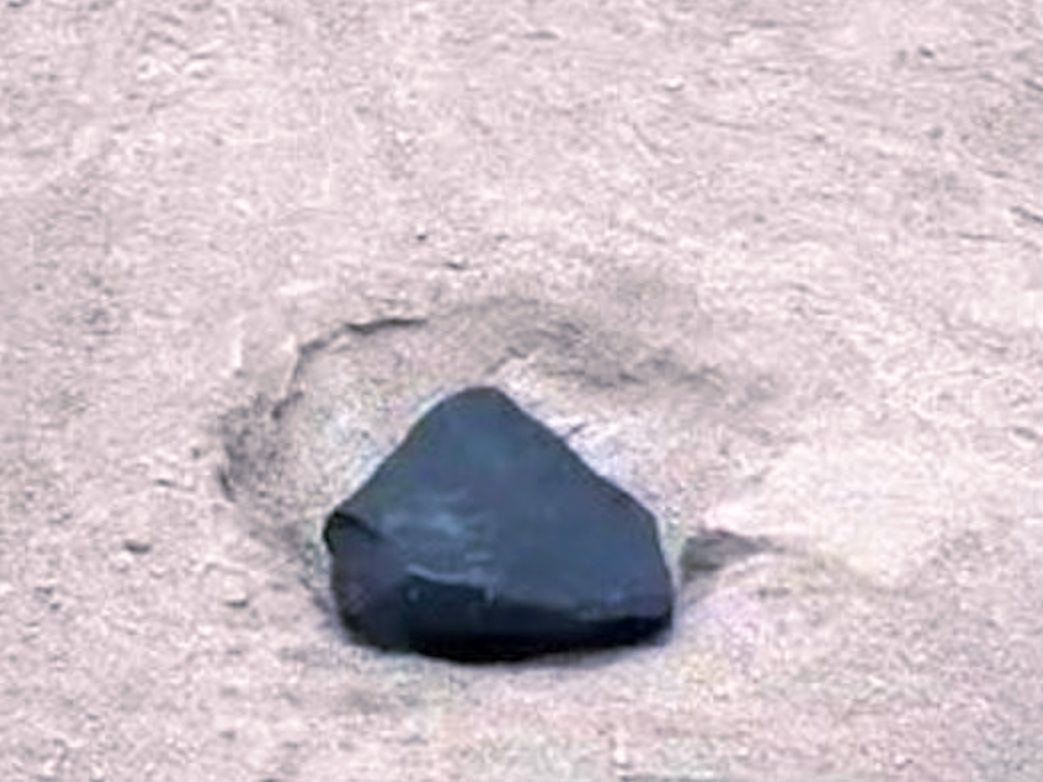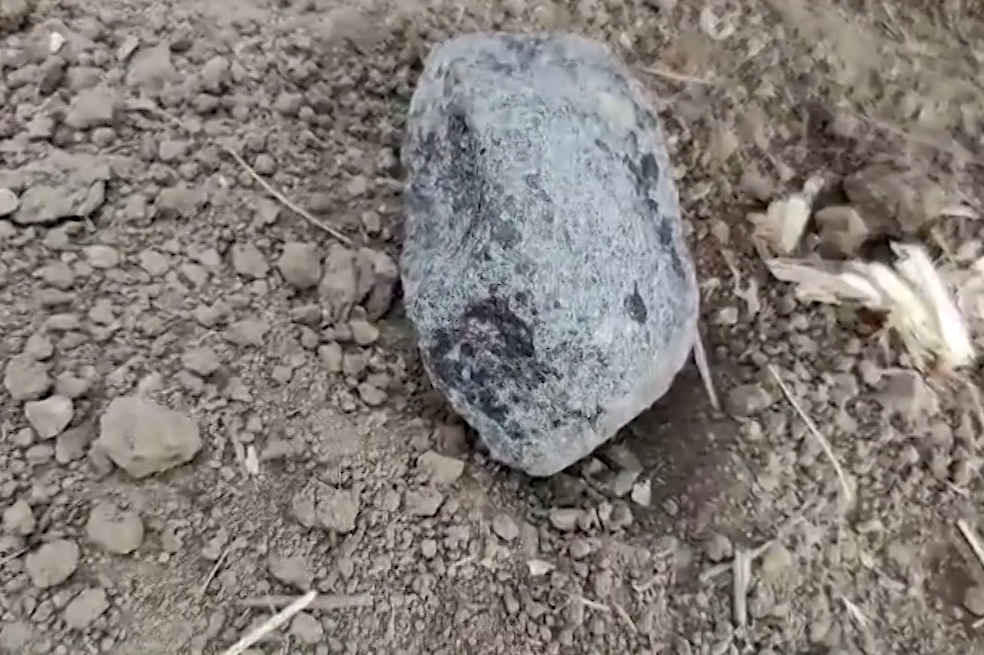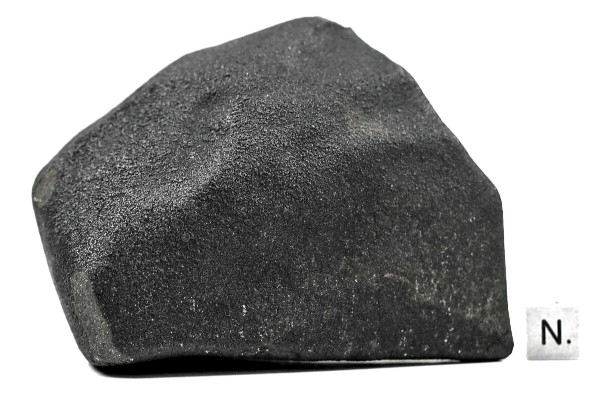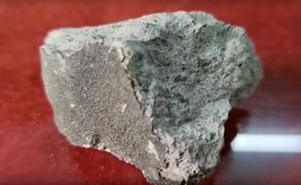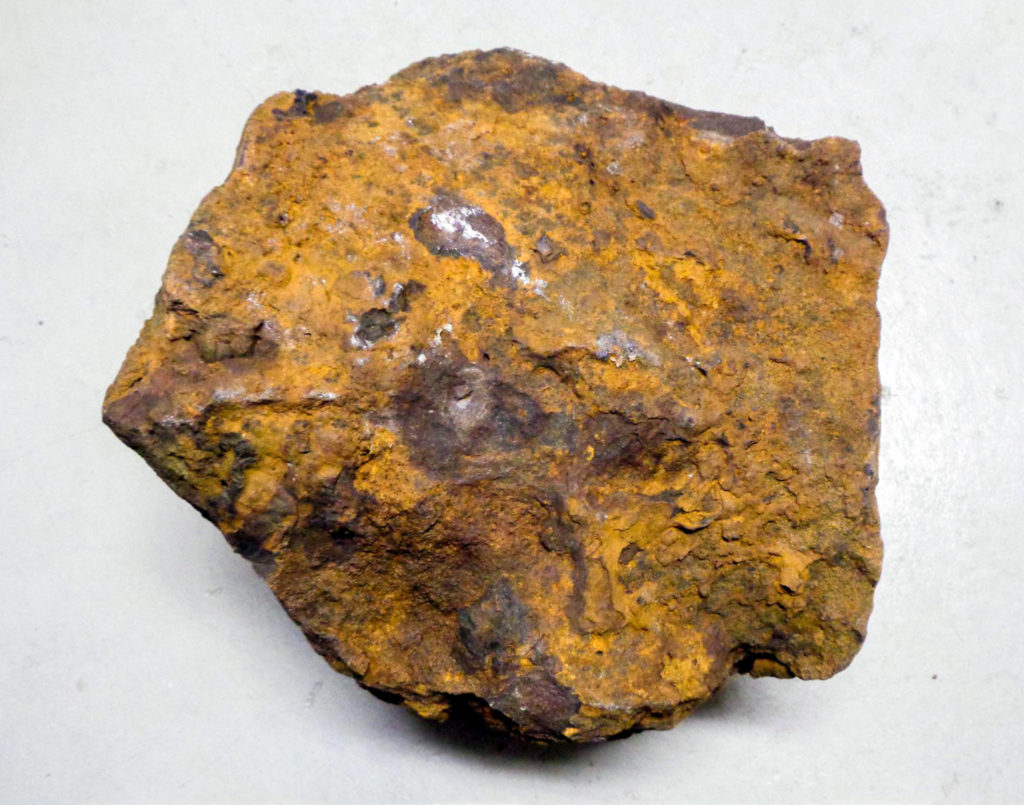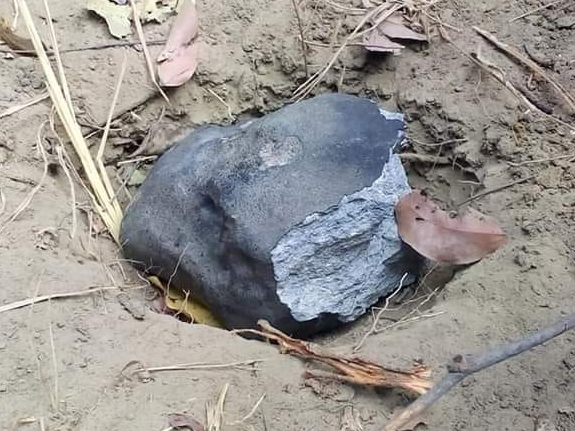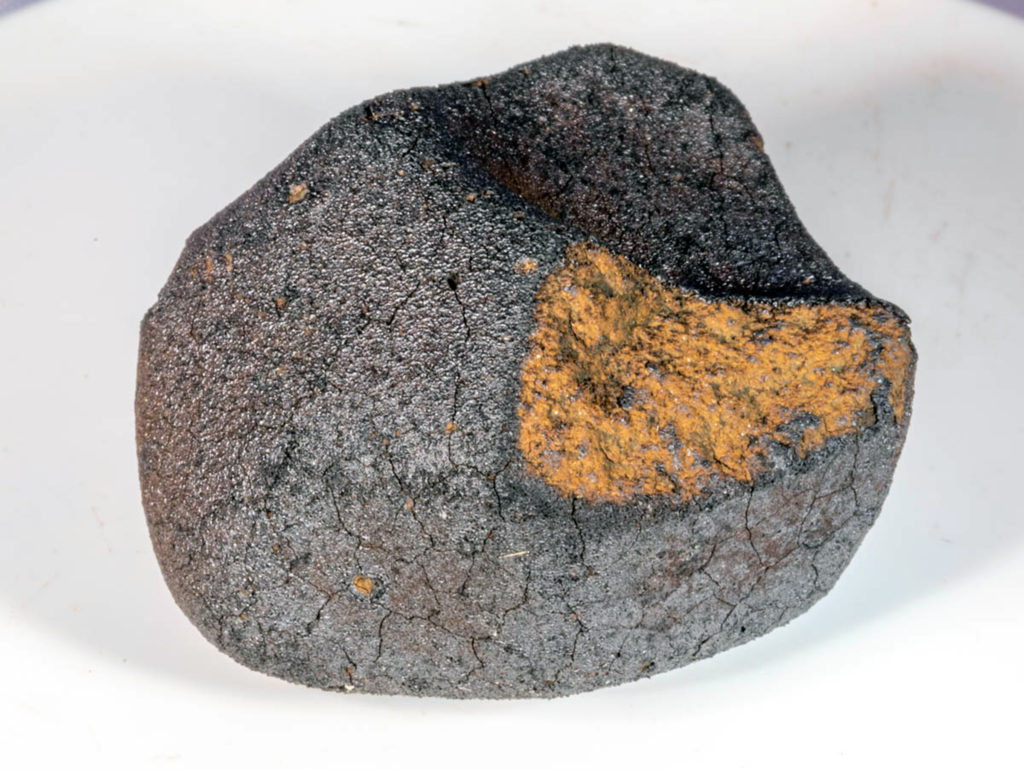Physicochemical Controls on the Compositions of the Earth and PlanetsOPEN ACCESS
Paolo A. Sossi, Remco C. Hin, Thorsten Kleine, Alessandro Morbidelli & Francis Nimmo Space Science Reviews, Volume 221, article number 118, Published: 25 November 2025 LINK (OPEN ACCESS)PDF (OPEN ACCESS) “Despite the fact that the…
Potassium-40 isotopic evidence for an extant pre-giant-impact component of Earth’s mantle
Da Wang, Nicole X. Nie, Bradley J. Peters, James M. D. Day, Steven B. Shirey & Richard W. Carlson Nature Geoscience, Published: 14 October 2025 LINK “Earth’s bulk composition has elemental and isotopic characteristics that…
Implications of Differentiated Late Accretion for the Volatile Inventory of the Bulk Silicate EarthOPEN ACCESS
Damanveer S. Grewal and Varun Manilal The Planetary Science Journal, Volume 6, Number 1 LINK (OPEN ACCESS)PDF (OPEN ACCESS) “Earth is believed to have acquired its highly siderophile element (HSE) inventory through the late accretion…
The effect of collisional erosion on the composition of Earth-analog planets in Grand Tack models: Implications for the formation of the Earth
L. Allibert, J. Siebert, S. Charnoz, S.A. Jacobson, S.N. Raymond IcarusIn Press, Journal Pre-proof, Available online 14 November 2022 LINK “Impact-induced erosion of the Earth’s early crust during accretion of terrestrial bodies can significantly modify…
Limited nitrogen isotopic fractionation during core-mantle differentiation in rocky protoplanets and planets
Damanveer S. Grewal, Tao Sun, Sanath Aithala, Taylor Hough, Rajdeep Dasgupta, Laurence Y. Yeung, Edwin Schauble Geochimica et Cosmochimica ActaAvailable online 19 October 2022 LINK “15N/14N ratios of meteorites are a powerful tool for tracing…
The cadmium and zinc isotope compositions of the silicate Earth – implications for terrestrial volatile accretionOPEN ACCESS
Harvey Pickard, Emeliana Palk, Maria Schönbächler, Rebekah E.T. Moore, Barry J. Coles, Katharina Kreissig, Katrina Nilsson-Kerr, Samantha J. Hammond, Eiichi Takazawa, Christophe Hémond, Peter Tropper, Dan N. Barfod, Mark Rehkämper Geochimica et Cosmochimica ActaAvailable online…
Earth’s composition was modified by collisional erosion
Paul Frossard, Claudine Israel, Audrey Bouvier, Maud Boyet Science29 Sep 2022Vol 377, Issue 6614pp. 1529-1532 LINK Supplementary Materials “The samarium-146 (146Sm)–neodymium-142 (142Nd) short-lived decay system (half-life of 103 million years) is a powerful tracer of…
An exploration of whether Earth can be built from chondritic components, not bulk chondrites
Conel M. O’D. Alexander Geochimica et Cosmochimica ActaAvailable online 17 December 2021 LINK “Here, two of a range of possible models are explored that assume that: (i) two of the main chondritic components (chondrules and…
Deep-mantle krypton reveals Earth’s early accretion of carbonaceous matter
Sandrine Péron, Sujoy Mukhopadhyay, Mark D. Kurz & David W. Graham Nature, Volume 600, pages 462–467 (2021)Published: 15 December 2021 LINK “Establishing when, and from where, carbon, nitrogen and water were delivered to Earth is…
Chromium Stable Isotope Panorama of Chondrites and Implications for Earth Early Accretion
Ke Zhu (朱柯), Frédéric Moynier, Conel M. O’D. Alexander, Jemma Davidson, Devin L. Schrader, Jian-Ming Zhu, Guang-Liang Wu, Martin Schiller, Martin Bizzarro, and Harry Becker The Astrophysical Journal, Volume 923, Number 1 LINK “We investigated…
Numerous chondritic impactors and oxidized magma ocean set Earth’s volatile depletionOPEN ACCESS
Haruka Sakuraba, Hiroyuki Kurokawa, Hidenori Genda & Kenji Ohta Scientific Reports, Volume 11, Article number: 20894 (2021) LINK (OPEN ACCESS)PDF (OPEN ACCESS) “Earth’s surface environment is largely influenced by its budget of major volatile elements:…
Earth’s accretion inferred from iron isotopic anomalies of supernova nuclear statistical equilibrium originOPEN ACCESS
Timo Hopp, Nicolas Dauphas, Fridolin Spitzer, Christoph Burkhardt, Thorsten Kleine Accepted for publication in Earth and Planetary Science Letters PDF (OPEN ACCESS) Update (10 November 2021):Earth and Planetary Science LettersVolume 577, 1 January 2022LINK “Highlights…
Tidal Evolution of the Earth–Moon System with a High Initial ObliquityOPEN ACCESS
The Planetary Science Journal, Volume 2, Number 4Published: 4 August 2021 LINK (OPEN ACCESS)PDF (OPEN ACCESS) “A giant-impact origin for the Moon is generally accepted, but many aspects of lunar formation remain poorly understood and…
Tellurium isotope cosmochemistry: Implications for volatile fractionation in chondrite parent bodies and origin of the late veneer
Jan L. Hellmann, Timo Hopp, Christoph Burkhardt, Harry Becker, Mario Fischer-Gödde, Thorsten Kleine Geochimica et Cosmochimica ActaIn Press, Journal Pre-proof, Available online 6 July 2021 LINK “Tellurium stable isotope compositions and abundances (δ128/126Te relative to…
The Effect of a Strong Pressure Bump in the Sun’s Natal Disk: Terrestrial Planet Formation via Planetesimal Accretion Rather than Pebble Accretion
André Izidoro, Bertram Bitsch, and Rajdeep Dasgupta The Astrophysical Journal, Volume 915, Number 1 LINK “Mass-independent isotopic anomalies of carbonaceous and noncarbonaceous meteorites show a clear dichotomy suggesting an efficient separation of the inner and…
Solar noble gases in an iron meteorite indicate terrestrial mantle signatures derive from Earth’s coreOPEN ACCESS
Manfred Vogt, Mario Trieloff, Ulrich Ott, Jens Hopp & Winfried H. Schwarz Communications Earth & Environment 2 , 1–7 LINK (OPEN ACCESS)PDF (OPEN ACCESS) “Noble gases are important tracers of planetary accretion and acquisition of…
Accretion and differentiation of early planetary bodies as recorded in the composition of the silicate Earth
Klaus Mezger, Alessandro Maltese, Hauke Vollstaedt IcarusIn Press, Journal Pre-proof, Available online 21 April 2021 LINK “Highlights • Element abundances in silicate Earth are the result of accretion of three major chemically and isotopically different…
Isotopic evidence for the formation of the Moon in a canonical giant impactOPEN ACCESS
Sune G. Nielsen, David V. Bekaert & Maureen Auro Nature Communications, Volume 12, Article number: 1817 (2021) LINK (OPEN ACCESS)PDF (OPEN ACCESS) “Isotopic measurements of lunar and terrestrial rocks have revealed that, unlike any other…
Quantitative estimates of impact induced crustal erosion during accretion and its influence on the Sm/Nd ratio of the Earth
L. Allibert, S. Charnoz, J. Siebert, S.A. Jacobson, S.N. Raymond IcarusIn Press, Journal Pre-proof, Available online 17 March 2021 LINK “Highlights • Terrestrial planets formation involve highly energetic collisions.• Collisional erosion of differentiated bodies may…
Hybrid accretion of carbonaceous chondrites by radial transport across the Jupiter barrierOPEN ACCESS
Elishevah van Kooten, Martin Schiller, Frederic Moynier, Anders Johansen, Troels Haugboelle, Martin Bizzarro The Astrophysical Journal, 2021, accepted after peer-review PDF (OPEN ACCESS) Update (26 March 2021): The Astrophysical Journal, Volume 910, Number 1 LINK…
Chromium isotopic insights into the origin of chondrite parent bodies and the early terrestrial volatile depletion
Ke Zhu 朱柯, Frédéric Moynier, Martin Schiller, Conel M. O’D. Alexander, Jemma Davidson, Devin L. Schrader, Elishevah van Kooten, Martin Bizzarro Geochimica et Cosmochimica ActaAvailable online 27 February 2021 LINK “Chondrites are meteorites from undifferentiated…
Dynamic evolution of major element chemistry in protoplanetary disks and its implications for Earth-enstatite chondrite connection
Yoshinori Miyazaki, Jun Korenaga IcarusIn Press, Journal Pre-proof, Available online 19 February 2021 LINK “Chondrites are the likely building blocks of Earth, and identifying the group of chondrite that best represents Earth is a key…
Nickel isotopic evidence for late-stage accretion of Mercury-like differentiated planetary embryosOPEN ACCESS
Shui-Jiong Wang, Wenzhong Wang, Jian-Ming Zhu, Zhongqing Wu, Jingao Liu, Guilin Han, Fang-Zhen Teng, Shichun Huang, Hongjie Wu, Yujian Wang, Guangliang Wu & Weihan Li Nature Communications, Volume 12, Article number: 294 (2021) LINK (OPEN…
The origin of the Moon’s Earth-like tungsten isotopic composition from dynamical and geochemical modelingOPEN ACCESS
Rebecca A. Fischer, Nicholas G. Zube & Francis Nimmo Nature Communications, Volume 12, Article number: 35 (2021) LINK (OPEN ACCESS)PDF (OPEN ACCESS) “The Earth and Moon have identical or very similar isotopic compositions for many…
Formation of Venus, Earth and Mars: Constrained by Isotopes
Helmut Lammer, Ramon Brasser, Anders Johansen, Manuel Scherf & Martin Leitzinger Space Science ReviewsPublished: 22 December 2020 LINKUpdate (12 February 2021); PDF (OPEN ACCESS) “Here we discuss the current state of knowledge of terrestrial planet…
Variable refractory lithophile element compositions of planetary building blocksOPEN ACCESS
Takashi Yoshizaki, Richard D. Ash, Marc D. Lipella, Tetsuya Yokoyama, William F. McDonough PDF (OPEN ACCESS) “Chondrites are undifferentiated sediments of materials left over from the earliest stage of the solar system history, and are…
Geochemical Constraints on the Origin of the Moon and Preservation of Ancient Terrestrial Heterogeneities
Simon J. Lock, Katherine R. Bermingham, Rita Parai & Maud Boyet Space Science ReviewsVolume 216, Article number: 109 (2020) LINK “The Moon forming giant impact marks the end of the main stage of Earth’s accretion…
Isotopically distinct terrestrial planets via local accretion
Jingyi Mah, Ramon Brasser IcarusAvailable online 21 August 2020, 114052 LINK “Highlights • We find out what the depleted disc model predicts for the terrestrial planets’ isotopic compositions.• The terrestrial planets accrete most of their…
Highly reduced accretion of the Earth by large impactors? Evidence from elemental partitioning between sulfide liquids and silicate melts at highly reduced conditions
E.S.Steenstraa, E.Kelderman, E. Kelderman, J. Berndt, S. Klemme, E.S.Bullock, W. van Westrenen Geochimica et Cosmochimica ActaIn Press, Journal Pre-proof, Available online 11 July 2020 LINK “The Earth may have formed at very reducing conditions through…
Identification of chondritic krypton and xenon in Yellowstone gases and the timing of terrestrial volatile accretionOPEN ACCESS
Michael W. Broadley, Peter H. Barry, David V. Bekaert, David J. Byrne, Antonio Caracausi, Christopher J. Ballentine, and Bernard Marty PNAS, first published June 8, 2020 LINK (OPEN ACCESS)PDF (OPEN ACCESS) “Identifying the origin of…
The Non-carbonaceous–Carbonaceous Meteorite DichotomyOPEN ACCESS
T. Kleine, G. Budde, C. Burkhardt, T. S. Kruijer, E. A. Worsham, A. Morbidelli & F. Nimmo Space Science Reviews, Volume 216, Article number: 55 (2020) LINK (OPEN ACCESS)PDF (OPEN ACCESS) “The isotopic dichotomy between…
Dynamic evolution of major element chemistry in protoplanetary disks and its implications for chondrite formationOPEN ACCESS
Yoshinori Miyazaki, Jun Korenaga PDF (OPEN ACCESS) “Chondrites are the likely building blocks of Earth, and identifying the group of chondrite that best represents Earth is a key to resolving the state of the early…
Ruthenium isotope vestige of Earth’s pre-late-veneer mantle preserved in Archaean rocks
Mario Fischer-Gödde, Bo-Magnus Elfers, Carsten Münker, Kristoffer Szilas, Wolfgang D. Maier, Nils Messling, Tomoaki Morishita, Martin Van Kranendonk & Hugh Smithies Nature, Volume 579, pages 240–244 (2020) Published: 11 March 2020 LINK “The accretion of…
Accretion of the Earth—Missing Components?OPEN ACCESS
K. Mezger, M. Schönbächler & A. Bouvier Space Science Reviews, Volume 216, Article number: 27 (2020) Published: 04 March 2020 LINK (OPEN ACCESS) PDF (OPEN ACCESS) “Primitive meteorites preserve the chemical and isotopic composition of…
Volatile element chemistry during accretion of the earth
Bruce Fegley Jr, Katharina Lodders, Nathan S.Jacobson Geochemistry Review LINK “We review some issues relevant to volatile element chemistry during accretion of the Earth with an emphasis on historical development of ideas during the past…
Iron isotope evidence for very rapid accretion and differentiation of the proto-EarthOPEN ACCESS
Martin Schiller, Martin Bizzarro, and Julien Siebert Science Advances 12 Feb 2020: Vol. 6, no. 7, eaay7604 DOI: 10.1126/sciadv.aay7604 LINK (OPEN ACCESS) PDF (OPEN ACCESS) “Nucleosynthetic isotope variability among solar system objects provides insights into…
Si-Mg isotopes in enstatite chondrites and accretion of reduced planetary bodiesOPEN ACCESS
Jinia Sikdar & Vinai K. Rai Scientific Reports 10 , 1–12 LINK (OPEN ACCESS) PDF (OPEN ACCESS) “Among the primitive meteorite classes, Enstatite Chondrites (EC) are believed to share a common origin with the Earth…
Heterogeneous accretion of Earth inferred from Mo-Ru isotope systematicsOPEN ACCESS
Timo Hopp, Gerrit Budde, Thorsten Kleine Earth and Planetary Science Letters (17 January 2020) PDF (OPEN ACCESS) LINK (OPEN ACCESS) “The Mo and Ru isotopic compositions of meteorites and the bulk silicate Earth (BSE) hold…
A Unified Model for Hydrogen in the Earth and Moon: No one expects the Theia ContributionOPEN ACCESS
Steven J. Desch, Katharine L. Robinson Geochemistry In Press, Corrected Proof , Available online 22 October 2019 LINK (OPEN ACCESS) PDF (OPEN ACCESS) “The Moon is thought to have formed after a planetary embryo, known…
The origin of unequilibrated EH chondrites – constraints from in-situ analysis of Si isotopes, major and trace elements in silicates and metal
Yogita Kadlag, Michael Tatzel, Daniel A. Frick, Harry Becker Geochimica et Cosmochimica Acta In Press, Journal Pre-proof, Available online 16 September 2019 LINK “Various lines of evidence suggest that material isotopically similar to enstatite chondrites…
Potassium isotopic compositions of enstatite meteoritesOPEN ACCESS
Chen Zhao, Katharina Lodders, Hannah Bloom, Heng Chen, Zhen Tian, Piers Koefoed, Mária K. Pető, Kun Wang (王昆) Meteoritics & Planetary Science First Published: 21 July 2019 LINK Update (20 February 2020): PDF (OPEN ACCESS)…
Bulk chondrite variability in mass independent magnesium isotope compositions – Implications for initial solar system 26Al/27Al and the timing of terrestrial accretion
Tu-Han Luu, Remco C. Hin, Christopher D. Coath, Tim Elliott Earth and Planetary Science Letters Volume 522, 15 September 2019, Pages 166-175 LINK “Highlights • Bulk chondrites Al–Mg isotope analyses define a canonical isochron. •…
Earth’s volatile element depletion pattern inherited from a carbonaceous chondrite-like source
Ninja Braukmüller, Frank Wombacher, Claudia Funk & Carsten Münker Nature Geoscience, 1–5 LINK Supplementary information (PDF) “Earth’s volatile element abundances (for example, sulfur, zinc, indium and lead) provide constraints on fundamental processes, such as planetary…
Molybdenum isotopic evidence for the late accretion of outer Solar System material to Earth
Gerrit Budde, Christoph Burkhardt & Thorsten Kleine Nature Astronomy, 1–6 LINK “Earth grew through collisions with Moon-sized to Mars-sized planetary embryos from the inner Solar System, but it also accreted material from greater heliocentric distances…
Molybdenum Isotopic Evidence for an Outer Solar System Origin of the Moon-Forming Impactor
G. Budde, C. Burkhardt, T. Kleine 50th Lunar and Planetary Science Conference (2019), Abstract #2349 PDF abstract
Delivery of carbon, nitrogen, and sulfur to the silicate Earth by a giant impactOPEN ACCESS
Damanveer S. Grewal, Rajdeep Dasgupta, Chenguang Sun, Kyusei Tsuno and Gelu Costin Science Advances 23 Jan 2019: Vol. 5, no. 1, eaau3669 DOI: 10.1126/sciadv.aau3669 LINK (OPEN ACCESS) PDF (OPEN ACCESS) “Earth’s status as the only…
On the principle building blocks of Mars and Earth
Christian Liebske, Amir Khan IcarusAvailable online 20 January 2019 LINK “Highlights • Stochastic mixing of chondrites and achondrites to reconcile isotopic signatures for Mars and Earth indicate highly non-unique solution spaces • Complementary geophysical and…
Chemically defining the building blocks of the EarthOPEN ACCESS
Takashi Yoshizaki, William F. McDonough, Richard D. Ash, Tetsuya Yokoyama, Marc D. Lipella PDF (OPEN ACCESS) “Chondrites are undifferentiated sediments of material left over from the earliest solar system and are widely considered as representatives…
Nucleosynthetic vanadium isotope heterogeneity of the early solar system recorded in chondritic meteoritesOPEN ACCESS
Sune G. Nielsen, Maureen Auro, Kevin Righter, David Davis, Julie Prytulak, Fei Wu, Jeremy D. Owens Earth and Planetary Science Letters Volume 505, 1 January 2019, Pages 131-140 LINK (OPEN ACCESS) PDF (OPEN ACCESS) “Highlights…
Jupiter’s influence on the building blocks of Mars and EarthOPEN ACCESS
R. Brasser, N. Dauphas, S. J. Mojzsis Accepted for publication in GRL PDF (OPEN ACCESS) Radiometric dating indicates that Mars accreted in the first ~4 Myr of solar system formation, which coincides with the formation…
Heterogeneous delivery of silicate and metal to the Earth by large planetesimalsOPEN ACCESS
S. Marchi, R. M. Canup & R. J. Walker Nature Geoscience (2017) doi:10.1038/s41561-017-0022-3 Published online: 04 December 2017 LINK (OPEN ACCESS) “After the Moon’s formation, Earth experienced a protracted bombardment by leftover planetesimals. The mass…
Halogens in chondritic meteorites and terrestrial accretion
Patricia L. Clay, Ray Burgess, Henner Busemann, Lorraine Ruzié-Hamilton, Bastian Joachim, James M. D. Day & Christopher J. Ballentine Nature 551, 614–618 (30 November 2017) doi:10.1038/nature24625 LINK “Volatile element delivery and retention played a fundamental…
Silicate Earth’s missing niobium may have been sequestered into asteroidal cores
Carsten Münker, Raúl O. C. Fonseca & Toni Schulz Nature Geoscience doi:10.1038/ngeo3048 LINK “Geochemical models describing the behaviour of niobium during Earth’s growth rely on the general paradigm that niobium was delivered by Earth’s asteroidal…
The spatial distribution of carbon dust in the early solar nebula and the carbon content of planetesimalsOPEN ACCESS
Hans-Peter Gail, Mario Trieloff accepted by Astronomy & Astrophysics PDF (OPEN ACCESS) “A high fraction of carbon bound in solid carbonaceous material is observed to exist in bodies formed in the cold outskirts of the…
Tracing metal–silicate segregation and late veneer in the Earth and the ureilite parent body with palladium stable isotopes
J.B. Creech, F. Moynier, M. Bizzarro Geochimica et Cosmochimica Acta In Press, Accepted Manuscript, Available online 8 May 2017 LINK “Stable isotope studies of highly siderophile elements (HSE) have the potential to yield valuable insights…
Testing the chondrule-rich accretion model for planetary embryos using calcium isotopesOPEN ACCESS
Elsa Amsellem, Frédéric Moynier, Emily A. Pringle, Audrey Bouvier, Heng Chen, James M. D. Day PhD Student Conference (PhDSC), l’Institut de Physique du Globe de Paris (IPGP), 13-17 March 2017 PDF (OPEN ACCESS) Update (28…
Ruthenium isotopic evidence for an inner Solar System origin of the late veneer
Mario Fischer-Gödde & Thorsten Kleine Nature 541, 525–527 doi:10.1038/nature 21045 Published online: 25 January 2017 LINK “The excess of highly siderophile elements in the Earth’s mantle is thought to reflect the addition of primitive meteoritic…
The isotopic nature of the Earth’s accreting material through time
Nicolas Dauphas Nature 541, 521–524 (25 January 2017) doi:10.1038/nature20830 Published online: 25 January 2017 LINK “The Earth formed by accretion of Moon- to Mars-size embryos coming from various heliocentric distances. The isotopic nature of these…
Tungsten stable isotope compositions of terrestrial samples and meteorites determined by double spike MC-ICPMS
Nadine Krabbe, Thomas S. Kruijer, Thorsten Kleine Chemical Geology In Press, Accepted Manuscript, Available online 23 December 2016 LINK “Tungsten stable isotopes hold great potential to examine a variety of physical and chemical processes operating…
Primitive Solar System materials and Earth share a common initial 142Nd abundance
A. Bouvier & M. Boyet Nature 537, 399–402 (15 September 2016) doi:10.1038/nature19351 LINK “The early evolution of planetesimals and planets can be constrained using variations in the abundance of neodymium-142 (142Nd), which arise from the…
Core merging and stratification following giant impact
Maylis Landeau, Peter Olson, Renaud Deguen & Benjamin H. Hirsh Nature Geoscience(2016) doi:10.1038/ngeo2808 Published online 12 September 2016 LINK “A stratified layer below the core–mantle boundary has long been suspected on the basis of geomagnetic…
Carbon and sulfur budget of the silicate Earth explained by accretion of differentiated planetary embryos
Yuan Li, Rajdeep Dasgupta, Kyusei Tsuno, Brian Monteleone & Nobumichi Shimizu Nature Geoscience doi:10.1038/ngeo2801 Published online 05 September 2016 LINK “The abundances of volatile elements in the Earth’s mantle have been attributed to the delivery…
Lead isotope evidence for a young formation age of the Earth–Moon systemOPEN ACCESS
J.N. Connelly, M. Bizzarro Earth and Planetary Science Letters, Volume 452, 15 October 2016, Pages 36-43 LINK (OPEN ACCESS) “Highlights • We use Pb isotopes to constrain the timing of the Moon-forming giant impact. •…
Chondritic xenon in the Earth’s mantle
Antonio Caracausi,Guillaume Avice,Peter G. Burnard, Evelyn Füri,Bernard Marty Nature (25 April 2016) | doi:10.1038/nature17434 LINK “Noble gas isotopes are powerful tracers of the origins of planetary volatiles, and the accretion and evolution of the Earth….
The stable Cr isotopic compositions of chondrites and silicate planetary reservoirs
Ronny Schoenberg, Alexandra Merdian, Chris Holmden, Ilka C. Kleinhanns, Kathrin Haßler, Martin Wille, Elmar Reitter Geochimica et Cosmochimica Acta In Press, Accepted Manuscript, Available online 16 March 2016 doi:10.1016/j.gca.2016.03.013 LINK “The depletion of chromium in…
The building blocks of Earth and Mars: A close genetic link
Caroline Fitoussi, Bernard Bourdon, Xueying Wang Earth and Planetary Science Letters Available online 8 December 2015 doi:10.1016/j.epsl.2015.11.036 LINK “The Earth formed in a swarm of Moon- to Mars-sized objects that collided together to build our…
The accretion and differentiation of Earth under oxidizing conditions
R. Bastian Georg and Anat Shahar American Mineralogist doi: 10.2138/am-2015-5153 Volume 100 no. 11-12 p. 2739-2748 LINK “We present a new approach to model planetary accretion and continuous core formation, and discuss the implications if…
The origin of the neon isotopes in chondrites and on Earth
Manuel Moreira, Sébastien Charnoz Earth and Planetary Science Letters In Press, Corrected Proof, Available online 16 November 2015 doi:10.1016/j.epsl.2015.11.002 LINK “We discuss the origin of the neon isotopic signatures in chondrites and in the terrestrial…
Evidence for primordial water in Earth’s deep mantle
Lydia J. Hallis, Gary R. Huss, Kazuhide Nagashima, G. Jeffrey Taylor, Sæmundur A. Halldórsson, David R. Hilton, Michael J. Mottl, Karen J. Meech Science 13 November 2015: Vol. 350 no. 6262 pp. 795-797 DOI: 10.1126/science.aac4834…
Lunar volatile depletion due to incomplete accretion within an impact-generated disk
Robin M. Canup, Channon Visscher, Julien Salmon & Bruce Fegley Jr Nature Geoscience(2015) doi:10.1038/ngeo2574 Published online 09 November 2015 LINK
s-Process Os isotope enrichment in ureilites by planetary processing
S. Goderis, A.D. Brandon, B. Mayer, M. Humayun Earth and Planetary Science Letters Volume 431, 1 December 2015, Pages 110–118 doi:10.1016/j.epsl.2015.09.021 LINK “Ubiquitous nucleosynthetic isotope anomalies relative to the terrestrial isotopic composition in Mo, Ru,…
Compositional evolution during rocky protoplanet accretion
Philip J. Carter, Zoë M. Leinhardt, Tim Elliott, Michael J. Walter, Sarah T. Stewart Accepted for publication in ApJ. PDF (full text) abstract Animations to accompany selected figures in the paper “The Earth appears non-chondritic…
Cosmochemical fractionation by collisional erosion during the Earth’s accretion
Asmaa Boujibar, Denis Andrault, Nathalie Bolfan-Casanova, Mohamed Ali Bouhifd & Julien Monteux Nature Communications 6, Article number: 8295 doi:10.1038/ncomms9295 Published 23 September 2015 LINK (open access) Supplementary information (PDF) “Early in the Solar System’s history,…
Terrestrial Planet Formation Constrained by Mars and the Structure of the Asteroid Belt
André Izidoro, Sean N. Raymond, Alessandro Morbidelli, Othon C. Winter Accepted for publication in MNRAS update (Sept 9): MNRAS (November 11, 2015) 453 (4): 3619-3634. doi: 10.1093/mnras/stv1835 First published online September 9, 2015 PDF (full…
Connections between the bulk composition, geodynamics and habitability of Earth
A. M. Jellinek, M. G. Jackson Nature Geoscience (2015) doi:10.1038/ngeo2488 Published online 20 July 2015 LINK
Extensive volatile loss during formation and differentiation of the Moon
Chizu Kato, Frederic Moynier, Maria C. Valdes, Jasmeet K. Dhaliwal, James M.D. Day Nature Communications 6, Article number: 7617 doi:10.1038/ncomms8617 LINK (open access)
On the probability of the collision of a Mars-sized planet with the Earth to form the Moon
Rudolf Dvorak, Birgit Loibnegger, Thomas I. Maindl submitted to MNRAS PDF (full text) abstract
Chips Off the Old Block: Enstatite Chondrites as Samples of the Proto-Earth
Gaidos E. * Yin Q.-Z. 78th Annual Meeting of the Meteoritical Society (2015), abstract #5145 abstract (PDF)
Growth of asteroids, planetary embryos, and Kuiper belt objects by chondrule accretion
Anders Johansen, Mordecai-Mark Mac Low, Pedro Lacerda, Martin Bizzarro Science Advances 17 Apr 2015: Vol. 1 no. 3 e1500109 DOI: 10.1126/sciadv.1500109 PDF (full text) LINK (full text)
Tungsten isotopic evidence for disproportional late accretion to the Earth and Moon
Mathieu Touboul, Igor S. Puchtel & Richard J. Walker Nature (08 April 2015) | doi:10.1038/nature14355 LINK
Lunar tungsten isotopic evidence for the late veneer
Thomas S. Kruijer, Thorsten Kleine, Mario Fischer-Gödde & Peter Sprung Nature (2015)doi:10.1038/nature14360 Published online 08 April 2015 LINK
Early Evolution of the Earth-Moon System with a Fast-Spinning Earth
Jack Wisdom, ZhenLiang Tian Icarus available online 7 March 2015 doi:10.1016/j.icarus.2015.02.025 LINK
Volatile Delivery to Planets from Water-rich Planetesimals around Low Mass Stars
Fred J. Ciesla, Gijs D. Mulders, Ilaria Pascucci, Daniel Apai accepted to ApJ PDF LINK (full text) LINK
A primordial origin for the composition similarity between the Earth and the Moon
Alessandra Mastrobuono-Battisti, Hagai B. Perets, Sean N. Raymond accepted for publication in Nature PDF LINK LINK Updated (9 April 2015): PDF LINK
Earth and Terrestrial Planet Formation
Seth A. Jacobson, Kevin J. Walsh accepted for publication in Early Earth, an AGU Monograph edited by James Badro and Michael J. Walter PDF LINK (full text) LINK(abstract)
Reactive ammonia in the solar protoplanetary disk and the origin of Earth’s nitrogen
Dennis Harries,Peter Hoppe, Falko Langenhorst Nature Geoscience (2015) doi:10.1038/ngeo2339 LINK Supplementary Information (PDF) Yamato 793321
High-temperature miscibility of iron and rock during terrestrial planet formation
Sean M. Wahl, Burkhard Militzer Earth and Planetary Science Letters Volume 410, 15 January 2015, Pages 25–33 LINK
Late Accretion and the Late Veneer
Alessandro Morbidelli, Bernard Wood In press as a review chapter of the AGU Monograph “The Early Earth”, J. Badro and M. Walter Eds ; arXiv:1411.4563 PDF LINK LINK
Ground-based IR observation of oxygen isotope ratios in the Venus atmosphere
N. Iwagami, G.L. Hashimoto, S. Ohtsuki, S. Takagi, S. Robert Planetary and Space Science available online 12 November 2014 LINK Correlation plot of δ17O and δ18O in Earth-Moon, Mars and Venus
A collisional origin to earth’s non-chondritic composition?
Amy Bonsor, Zoë M. Leinhardt, Philip J. Carter, Tim Elliott, Michael J. Walter, Sarah T. Stewart Icarus, DOI: 10.1016/j.icarus.2014.10.019available online 23 October 2014 LINK
Earth’s Uranium and Thorium content and geoneutrinos fluxes based on enstatite chondrites
Marc Javoy, Edouard Kaminski Earth and Planetary Science Letters Volume 407, 1 December 2014, Pages 1–8 DOI: 10.1016/j.epsl.2014.09.028 LINK
The nature of Earth’s building blocks as revealed by calcium isotopes
Valdes MC, Moreira M, Foriel J and Moynier F. Earth and Planetary Science Letters Volume 394, 15 May 2014, Pages 135–145 LINK
Vanadium isotopic difference between the silicate Earth and meteorites
Nielsen SG, Prytulak J, Wood BJ and Halliday AN (2014) Earth and Planetary Science Letters Volume 389, 1 March 2014, Pages 167–175 LINK
Instrumental neutron activation analyses of the most Earth-like meteorites
Gerd Weckwerth Journal of Radioanalytical and Nuclear Chemistry January 2014, Volume 299, Issue 1, pp 221-228 LINK C1-carbonaceous chondrites are known to have the highest meteoritic content of volatile elements. Nevertheless, most volatile elements, such…

